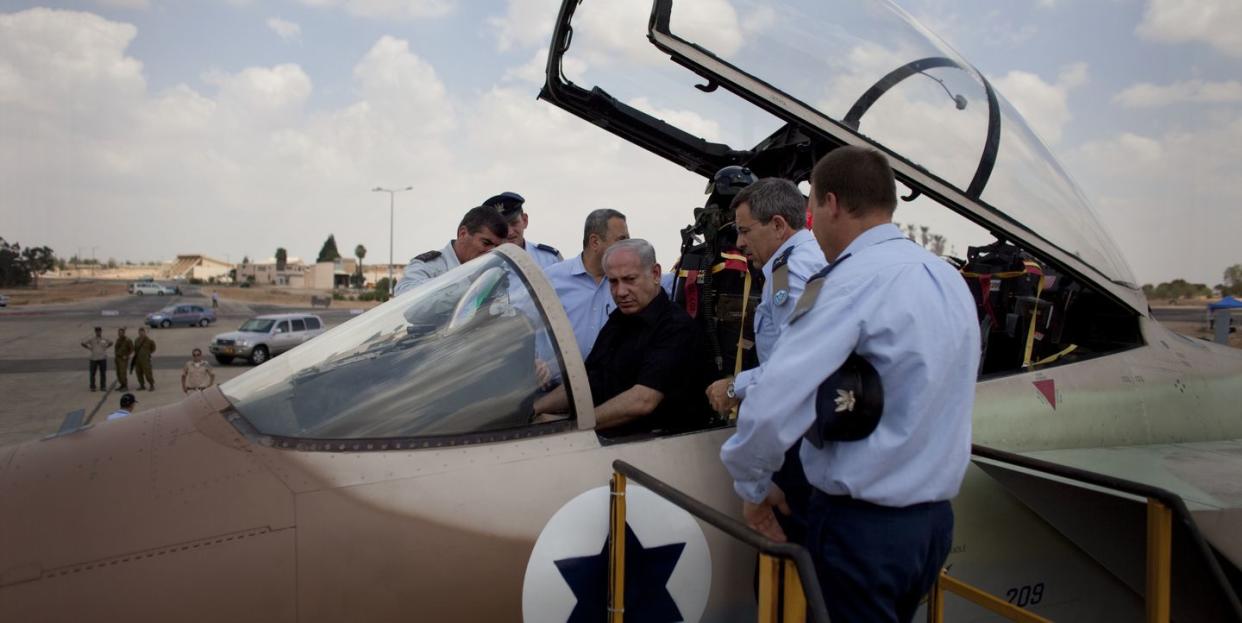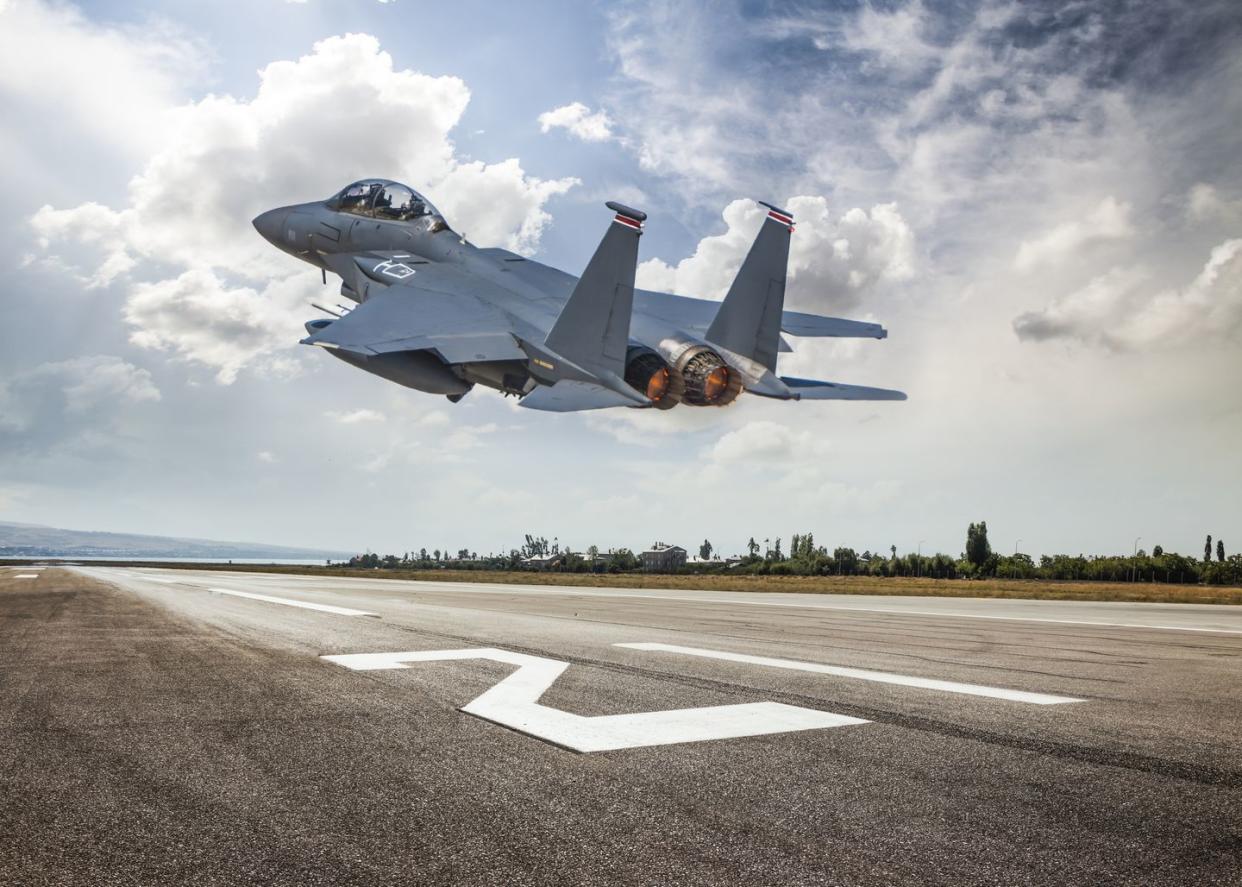Israel’s Elite Unit of F-15I “Thunder” Fighters Abort Planned Strike

In the last 75 years, Israel’s famed 69 Squadron—nicknamed the ‘Hammers’—has carried out air strikes on a royal palace in Cairo, air defense missile batteries in Lebanon and along the Suez canal, and a nuclear reactor under construction in Syria. But reservists in the unit recently attempted a very different type of strike in response to domestic political developments.
On March 5, 37 reservists pilots and navigators out of 40 in the elite unit announced they would not attend scheduled training on Wednesday, protesting judicial reforms planned by the far-right coalition of prime minister Benjamin Netanyahu that would allow lawmakers to overrule Supreme Court rulings through a simple majority vote. At the same time, he seeks to pass measures allowing appointment of loyalists to the court.
These reforms are intended to prevent Israel’s Supreme Court from impeding the legislative agendas of Netanyahu’s governing coalition, which include expanding the role of religion in public life, empowering Israeli settlers to confiscate land from minorities, shielding officials from corruption investigations, and maintaining/expanding privileged status and financial support for ultra-Orthodox groups.
According to The Times of Israel, the pilots expressed concerns Netanyahu’s reforms would collapse the legitimacy of Israel’s government, exposing them to prosecution by the International Criminal Court. However, after meeting with IDF chief of staff Herzi Halevi, on Tuesday the reservists aborted the planned strike in favor of a compromise: they reported to duty, but spent the day discussing their concerns over judicial reforms rather than participating in military exercises.
Based at Hatzerim airbase near Beersheba, 69 Squadron is the only IDF unit operating Israel’s F-15I Ra’am (Thunder)—a customized variant of the F-15E Strike Eagle, a heavy, two-seat fighter bomber that can fly fast and far carrying a whopping 11.5 tons of weapons and extra fuel. These aircraft would literally do much of the heavy lifting in a conflict between Israel and Iran due to the distance separating the two countries, making raids by Israel’s shorter-range F-16s and F-35s less efficient.
The attempted pilot’s strike is far from the only protest taking place in the reserve component of Israel’s military. 150 members of Unit 8200—Israel’s cyberwarfare and national signals intelligence unit comparable to the NSA—also threatened to go on strike should the judicial reform get passed.
Other elements of Israel’s armed forces and intelligence services that signed open letters opposing the changes include:
retired and reserve personnel of the Shin Bet intelligence service and Sayeret Matkal commando unit
250 reservist officers in the Special Ops division of Israeli military intelligence
Over 300 reservist and retired submariners in the Israeli Navy, who operate Israel’s sea-based nuclear missiles
15 retired major generals and “dozens of officers” from Israel’s Armored Corps
all ten living former commanders of the Israeli Air Force
The F-15I and Iran
Due to their huge fuel and weapons capacity, Israel’s F-15I would play a leading role in any scenario involving strikes on Iranian soil. Ironically for such bitter enemies, Israel and Iran do not share a border and are separated by hundreds of miles of other country’s airspace. While aerial refueling can extend range of Israel’s short-range fighters, tanker aircraft cannot safely fly everywhere a faster, stealthier fighter can.

Even then, Israel warplanes could only do so by approaching through Saudi airspace; or that of Syria or Jordan, followed by Turkey or Iraq. However, as the Saudis and Israelis improve their relations over shared opposition to Iran, it’s possible Riyadh might support Israeli raids.
Netanyahu and Saudi prince Mohamed Bin Salman have opposed diplomatic efforts between Washington and Tehran(which largely collapsed after the Trump administration withdrew from a nuclear deal in 2018), favoring a ‘military solution’ to Iran’s nuclear program. The IAF’s twenty-five F-15Is have long constituted its most effective means of doing so. They’re now aided by newer F-35I Adir stealth fighters that can help locate and destroy air defense systems, “kicking down the door” for the heavier-hitting but indiscrete F-15Is. Though Israel has uniquely developed special fuel tanks to extend the F-35’s reach, it still has a much lower practical payload when stealthy compared to the F-15Is.
The logistics of such strikes are still demanding enough, and Iran’s nuclear program sufficiently distributed and fortified, that it’s doubtful Israel could sustain the volume of attacks needed to truly ‘de-nuclearize’ Iran. And whether carried out unilaterally or with allies, an overt strike campaign targeting Iran would have far-reaching and costly regional and global repercussions.
Nonetheless, Mena Adel, a military aviation writer and editor published at Scramble magazine wrote to me Israel has repeatedly rehearsed long-distance raids with the Ra’amas a centerpiece.
The exercises simulate attacks on “…high-value and fortified targets that are protected from air defense units of all kinds, long- and short-range... Ra'am is thought to be the main striker in a possible attack on the Iranian reactors, but its presence requires many preparations in the theatre. First with the 5th gen [F-35 stealth] fighters in a forward observation mission integrated with ISTAR HVA (Intelligence, Surveillance, Targeting Acquisition and Reconnaissance of high value assets) to form a complete situational awareness picture, and then with intense electronic warfare interference to open up the corridor. F-16I Sufa fighters can make a gap by neutralizing the air defense systems in suppression/destruction of enemy air defense (SEAD/DEAD) missions so that the Ra'am fighters can attack with heavy weight bunker busting bombs, under cover from F-15C BAZ fighters and F-35s from possible Iranian interceptors.”
In scenarios where Israel supports a U.S. air campaign against Iran, the F-15Is instead focused on air defense suppression using long-range missiles to open gaps for U.S. heavy bombers. Israel’s F-35Is have also practiced attacking Iranian-style targets alongside U.S. Strike Eagle jets.
The Hammers in Israeli History
The “Hammer Project” originated very early in Israel’s existence as a state when Israeli agents purchased four World War II surplus B-17 heavy bombers via a front company. Though one bomber was impounded mid-transit by the FBI, the remaining three received a hodge podge of combat equipment in Czechoslovakia and World War II veterans for flight crews. Renamed 69 Squadron, they carried out raids on Cairo, Damascus and other targets during the first Arab-Israeli war, followed by eight combat sorties supporting Israeli troops in the 1956 Suez crisis.
Reactivated in 1969, the unit received vastly more advanced F-4 Phantom supersonic fighter-bombers. During the War of Attrition between Israel and Egypt, the squadron dueled Egyptian MiG-21 fighters with great success and battled SA-2 surface-to-air missile batteries established along the Suez canal with mixed outcomes.
But when Egypt and Syria surprise attacked Israel in the 1973 Yom Kippur War, the IAF was unprepared for their upgraded air defenses. 69 Squadron lost six F-4s in three days to Egyptian SA-3 and SA-6 missile systems, and Syrian ZSU-23-4 mobile anti-aircraft guns. The Hammers switched to strikes targeting airbases and depots with more success, though three more F-4s were lost. The U.S. hurriedly replaced the unit’s losses, furnishing eight Phantoms painted green for service in Vietnam armed with brand-new Maverick guided missiles.
After the war, the Hammers worked on new tactics and weapons to defeat air defenses, which again confronted IAF pilots when Israel invaded Lebanon in 1982. That June, the IAF executed Operation Mole Cricket 19, using Mastiff decoy drones to attract the radars used by a dense network of Syrian air defense batteries. Once those were active, 69 Squadron Phantoms targeted them with radar-homing AGM-78 and AGM-45 missiles. Ultimately, all but five of the 19 missile batteries were destroyed without loss, while escorting F-15s and F-16 jets shot down over 80 Syrian fighters that tried to intercede.
The squadron finally traded in their Phantoms when the first F-15Is were delivered to Israel 1998-2000 along with LANTIRN targeting pods. Besides greatly increased payload, the two-seat Ra’ams had multi-mode APG-70I radars capable of scanning for ground targets like missile-launching targets detectable up to 37 miles away. They were furthermore customized with Israeli-designed helmet-mounted display/sights, electronic self-defense jammers and radar warning receiver, radios, and support for indigenous Python-3/4 air-to-air missiles and Popeye cruise missiles (range 48 miles).
The unit has since seen combat in every major combat operation, particularly including the 2006 Lebanon War, and a 2007 strike that crippled a Syrian nuclear reactor in Deir-es-Zor using Maverick missile, guided to target by lasers used by Israeli special forces on the ground—bringing Syria’s nuclear research program to an abrupt end. Throughout the 2010s, the Ra’am carried out hundreds of strikes on Syrian government troops and Hezbollah and Iranian Revolution Guard Corps forces in Syria, without loss.
A quarter century later, Israel wants more Strike Eagles—and better ones. Thus it’s planning to buy an additional squadron of 25 new F-15EXs which will be customized in Israeli service as the F-15IA, as well upgrade 69 Squadron’s current Ra’am fleet to the improved model.
You Might Also Like
